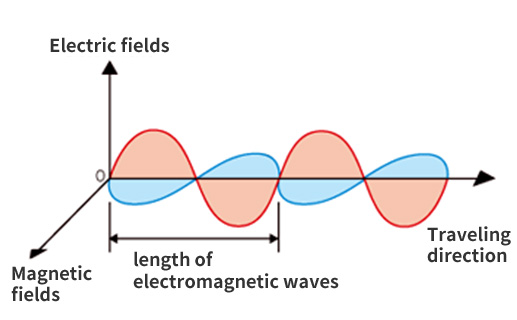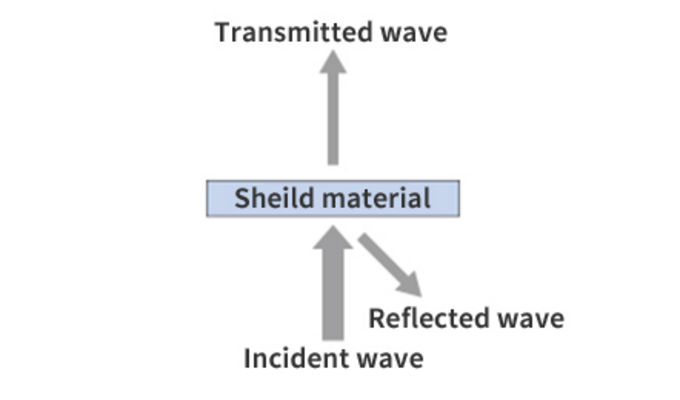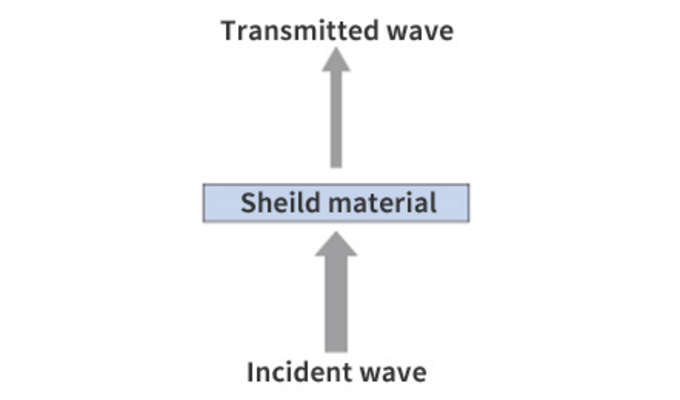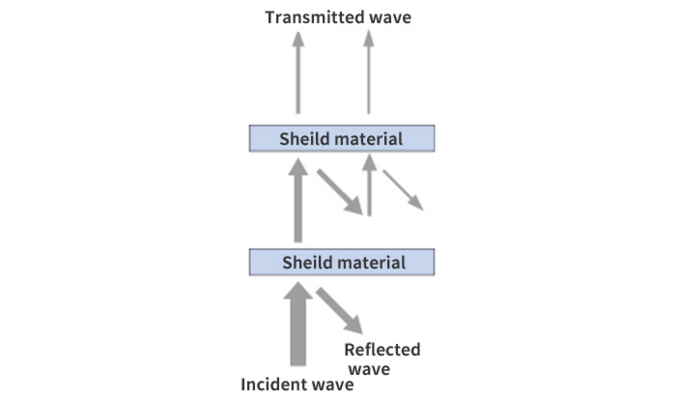What is Electromagnetic Wave Shield ?
- What is an electromagnetic wave ?
- Principle of electromagnetic wave shield
- Measuring method of electromagnetic wave shielding performance
- Shielding performance index
What is an electromagnetic wave ?

Principle of electromagnetic wave shield
An electromagnetic wave shield reduces the energy of electromagnetic waves by means of the reflection, absorption, and multiple reflection of the waves. By attenuating the electromagnetic waves, the shield avoids disruptions to human body and precision equipment.
In addition, electromagnetic waves not only go straight but may also be diffracted just as light is, depending on the frequency. Accordingly, when using a shielding material, it should be kept in mind that the electromagnetic wave may be diffracted around the shield and reach the part to be shielded.
Reflection loss

Absorption loss

Multiple reflection loss

Measuring method of electromagnetic wave shielding performance
Advantest method
This is a standard measurement method for assessing the properties of an electromagnetic wave shield.
The measurement is made by transmitting an electromagnetic wave of a specific frequency inside the shield box, receiving the electric field and magnetic field that pass through the sample, and measuring the level of attenuation caused by passing through the sample. The measurement can be made within the range of 10 to 10,000 MHz, and the shielding ratios of the electric field and magnetic field corresponding to the frequency are to be clearly stated.
Resistivity
With this method, resistivity is used as an alternative to the electromagnetic shield property. In other words, the lower the resistivity, the higher the electromagnetic shield property. There are three standards: insulation resistance, volume resistance, and surface resistance.
Shielding performance index
Shielding performance is expressed in decibels (dB). The value expresses the degree to which the electromagnetic wave was attenuated. The ratio between the intensity of the electric field before shielding and that after shielding (attenuation) is expressed in log.
Shielding performance (dB) = 20 x log(intensity of electric field after shielding / intensity of electric field before shielding)
For example, if shielding has reduced the intensity of the electromagnetic wave to;
- 1/10,the value is -20dB (shielding ratio: 90%)
- 1/100, the value is -40dB (shielding ratio: 99%)
- 1/1000, the value is -60dB (shielding ratio: 99.9%)
- 1/10000, the value is -80dB (shielding ratio: 99.99%)
It is said that shielding performance of 30dB or above is generally desirable to prevent the malfunction of electronic equipment such as computers.
Inquiries
TOYOCHEM CO., LTD. Information and Communication Materials Sales Division
TEL: +81-3-3272-0905
